As the strike at Saint Vincent remains high profile, and public favor for labor unions reaches new highs, experts and labor groups say they expect to see an increase in labor action in and around the region.
Get Instant Access to This Article
Subscribe to Worcester Business Journal and get immediate access to all of our subscriber-only content and much more.
- Critical Central Massachusetts business news updated daily.
- Immediate access to all subscriber-only content on our website.
- Bi-weekly print or digital editions of our award-winning publication.
- Special bonus issues like the WBJ Book of Lists.
- Exclusive ticket prize draws for our in-person events.
Click here to purchase a paywall bypass link for this article.
When nurses at Saint Vincent Hospital in Worcester went on strike in March, it would have been hard to predict the work stoppage would last the better part of a year, with no clear end in sight.
Eight months into the strike, which was primarily over staffing ratios, the Massachusetts Nurses Association, which represents nurses at the hospital, and leadership at Saint Vincent Hospital, which is owned by Tenet Healthcare Corp. of Texas, have negotiated a contract which assuaged nearly all of the nurses’ demands. That was in August. The final sticking point is whether the union nurses can return to their former positions.
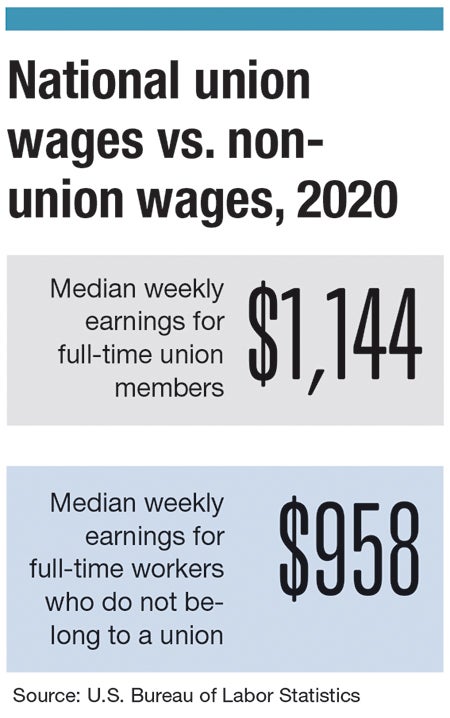
In the eight months since the Worcester nurses first stepped out on March 8, the labor climate has become one of the hottest issues in the country. Labor shortages, particularly in low-wage industries, have upended portions of the economy, and so many businesses are dealing with strikes nationwide, including a labor strike comprising roughly 10,000 union members at John Deere facilities in Illinois, Iowa, and Kansas, a more than month-long strike involving more than 1,000 union members across Nabisco outposts in five states, and several either undergoing or potentially forthcoming strikes at hospitals across the country, leading the national media to brand October as Striketober.
“I don’t think anyone really predicted this moment that we’re in, and I’m not sure anyone totally understands what’s going on,” said Eve Weinbaum, an associate professor at the University of Massachusetts Amherst Labor Center.
As the strike at Saint Vincent remains high profile, and public favor for labor unions reaches new highs, experts and labor groups say they expect to see an increase in labor action in and around the region, either in the form of more strikes, unionization efforts, and/or other collective bargaining efforts.
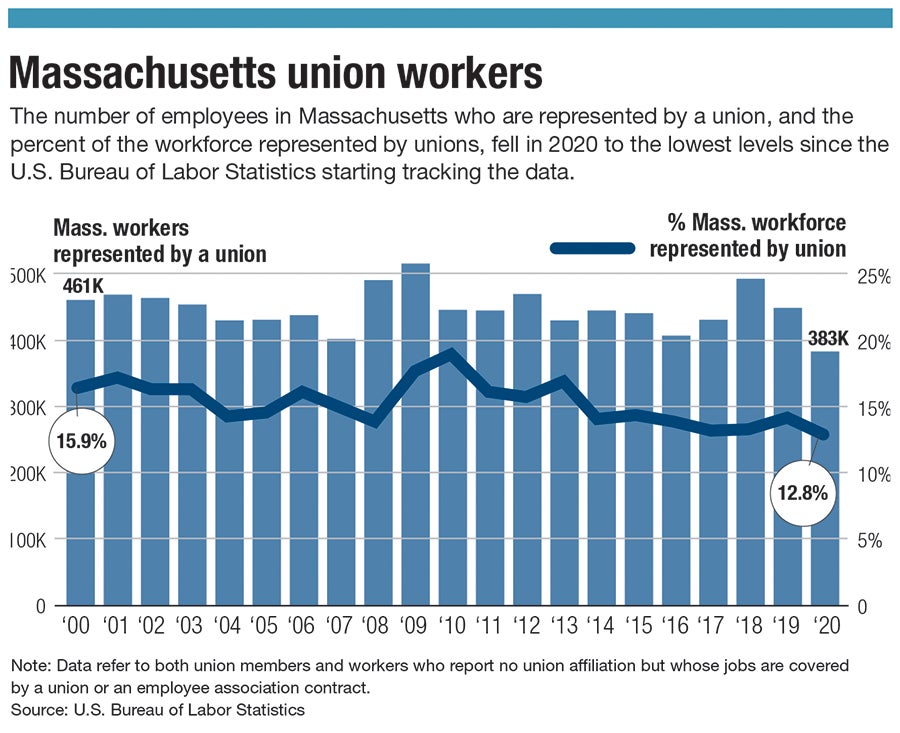
Unique moment
A September poll from the Washington, D.C. survey firm Gallup, Inc. reported 68% of Americans approve of labor unions, the highest that figure has been since 1965. Gallup has tracked public approval for unions since 1936, including annual check-ins since 2001. At the same time, 83% of respondents indicated no one in their household was currently part of a labor union.
“It’s a really interesting moment, and sort of unique in terms of workers starting to realize that they have more power than they’ve had in a long time, I think, in terms of coming up against management and fighting for what workers need on the job,” said Weinbaum.
A Labor Action Tracker tool from the New York State School of Industrial and Labor Relations at Cornell University in New York indicates seven strikes have taken place in Massachusetts since the beginning of the calendar year, including at Saint Vincent. Others include an 80-person strike among Teamsters members at Coca-Cola Bottling Company of Southeastern New England, Inc. in Westborough, which lasted two weeks at the end of March and concerned employee seniority rights.
Additional strikes in-state included a 111-day strike among United Steelworkers at an Allegheny Technologies facility in New Bedford, a seven-day strike among MNA members at the VNA of Boston, a three-day strike by the Harvard Graduate Students Union, an affiliate of the United Auto Workers, a one-day strike among International Alliance of Theatrical Stage Employees members at North Shore Music Theatre in Beverly, as well as a one-day strike at Williamstown Theatre Festival in Williamstown.
Weinbaum said she would expect to see more labor actions – including strikes and organizing – in the region and across the country moving forward. No particular industry appears more ripe than another, she said, pointing to developments in tech, health care, manufacturing, and media.
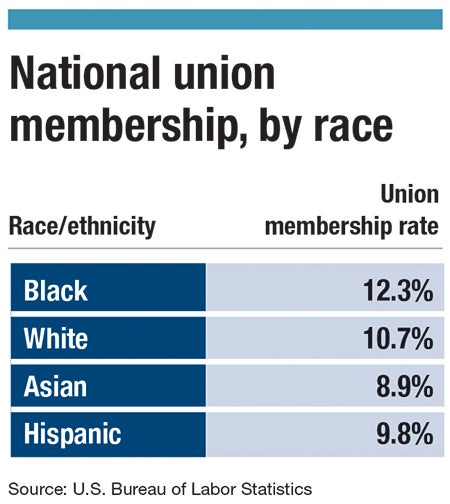
A January report from the U.S. Bureau of Labor Statistics reported a slight increase in union membership density in the workforce in 2020, with 10.8% of workers being union members, bolstered by a significant decline in the number of wage and salary workforce overall. That 10.8% figure is a half percentage point higher than the year prior, although the actual number of workers belonging to unions was down 2.2%.
The year prior, when the economy was more stable, BLS reported a union membership rate of 10.3%,which was 0.2 percentage points lower than the year before. In 1983, the first year BLS has comparable data, the union membership rate was 20.1%.
But unions aren’t the only mechanism through which employees bargain or implement work stoppages, Weinbaum said. She and other researchers in her field are also keeping tabs on non-union workplaces where employees negotiate and/or threaten to quit over working conditions. Such incidents don’t necessarily show up in statistics or get press attention, she said.
“That’s real evidence that the balance of power is shifting,” Weinbaum said.
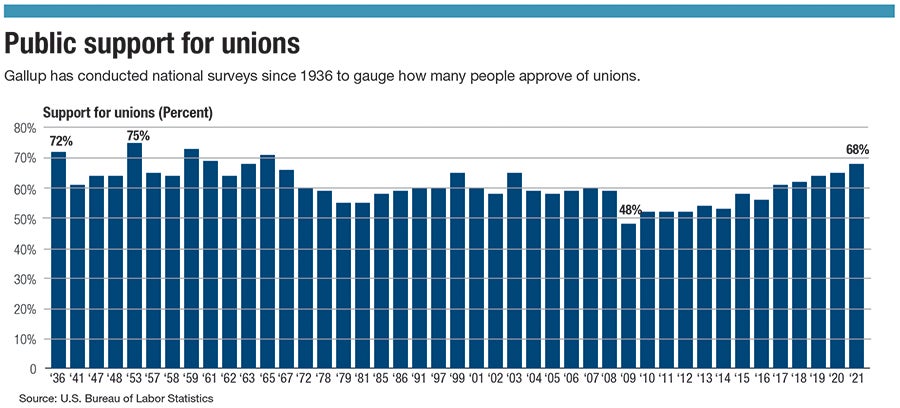
Saint Vincent example
With all of this attention on labor actions, Massachusetts AFL-CIO President Steven Tolman emphasized strikes are considered a last resort for union members.
“Nobody wants to go on strike,” Tolman said.
Tolman, who is in his 11th year as president of labor organization, which is a national federation of labor unions maintaining state federations and local labor councils, said he’s hopeful increased support for unions, as well as national legislative efforts to codify increased organizing protections, like the proposed Protecting the Right to Organize Act of 2021 in Congress, which passed in the House earlier this year but not the Senate, will result in more workplaces organizing.
Membership in unions, whose workers on average make more money than non-union workers, may be increasingly attractive as workers fight for higher wages and certain benefits, like pensions, also known as defined benefit plans, becoming decreasingly common. (401k plans, in contrast, are also known as defined contribution plans.) According to BLS, 15% of workers nationwide have access to a retirement plan that includes a pension as part of the model.
“People are seeing that those types of jobs don't exist,” Tolman said. “Everyone wants you to work on a handshake.”
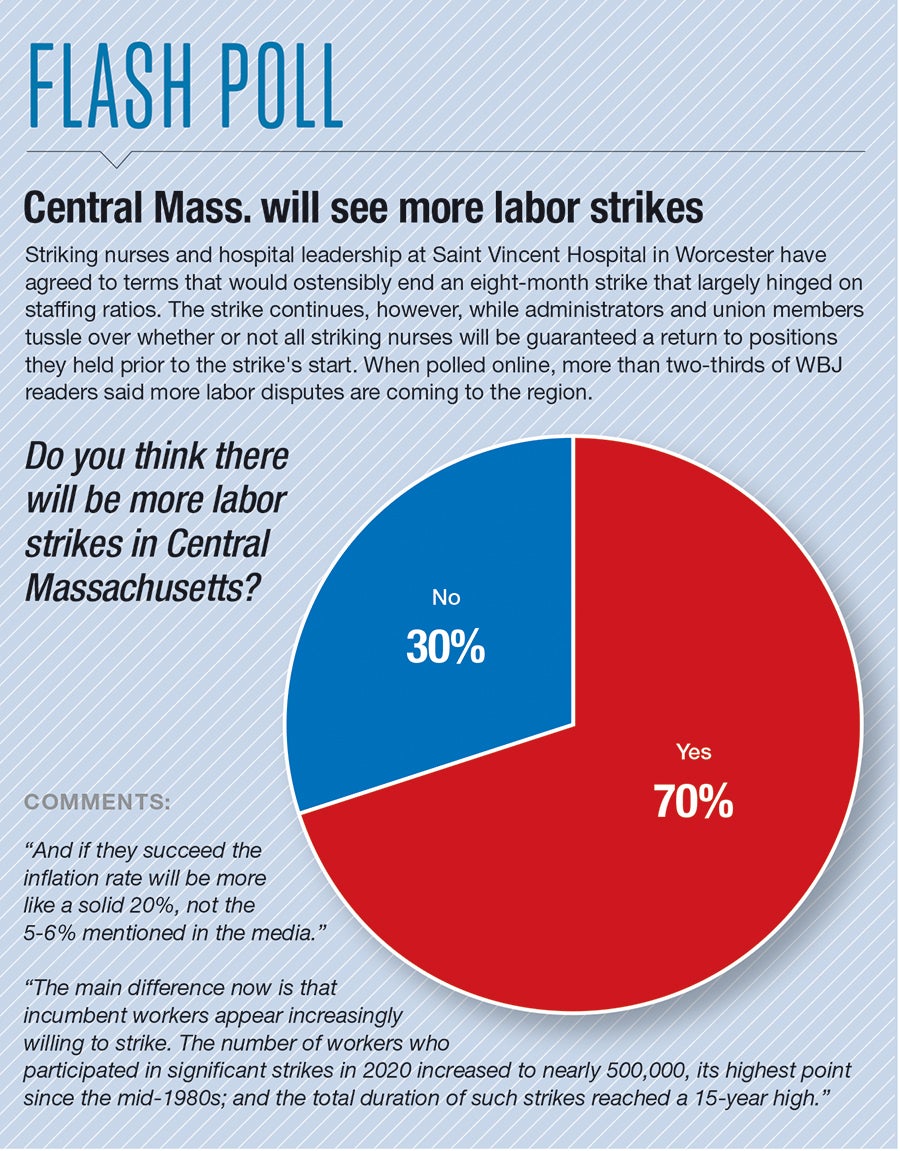
At Saint Vincent, though, the nurses' strike largely hinged on patient-to-nurse staffing ratios. Despite the continued tussle over whether striking nurses will be allowed to return to their previous positions, MNA Director of Public Communications David Schildmeier said the nurses successfully negotiated agreements on a number of big-ticket demands, including those ratios, resource nurse staffing, and limits on how often the hospital may flex down by sending nurses home when there are more nurses working during a shift than patient levels require.
Schildmeier, too, said he expects to see more workers organizing in the future. The continued battle over returning the nurses to work is only increasing attention to the topic.
“In some ways Saint Vincent was emblematic of what was happening in a lot of workplaces, and it’s on a bigger scale and against a very large corporate entity,” Weinbaum, from UMass said.
The impetus, she said, was not solely economic uncertainty brought about by the pandemic. She pointed toward increased corporate powers and a growing desire on behalf of workers to access the kind of benefits that unions might be able to provide.
“A lot of things happened at once,” Weinbaum said.

